The Fiddle Leaf Fig (Ficus Lyrata) is an incredibly popular houseplant. This stunning plant will grow into a large tree and produce big dark green foliage.
The Ficus Lyrata is native to the West African Coastline. This dramatic indoor tree gets its name from the large leaves that are shaped like a violin or fiddle. Even the name seems musical. 🙂
The Ficus Lyrata is a relatively simple houseplant. But some people find it finicky.
The rule of thumb with the Fiddle Leaf is if it seems happy, don’t move it. And don’t mess with it.
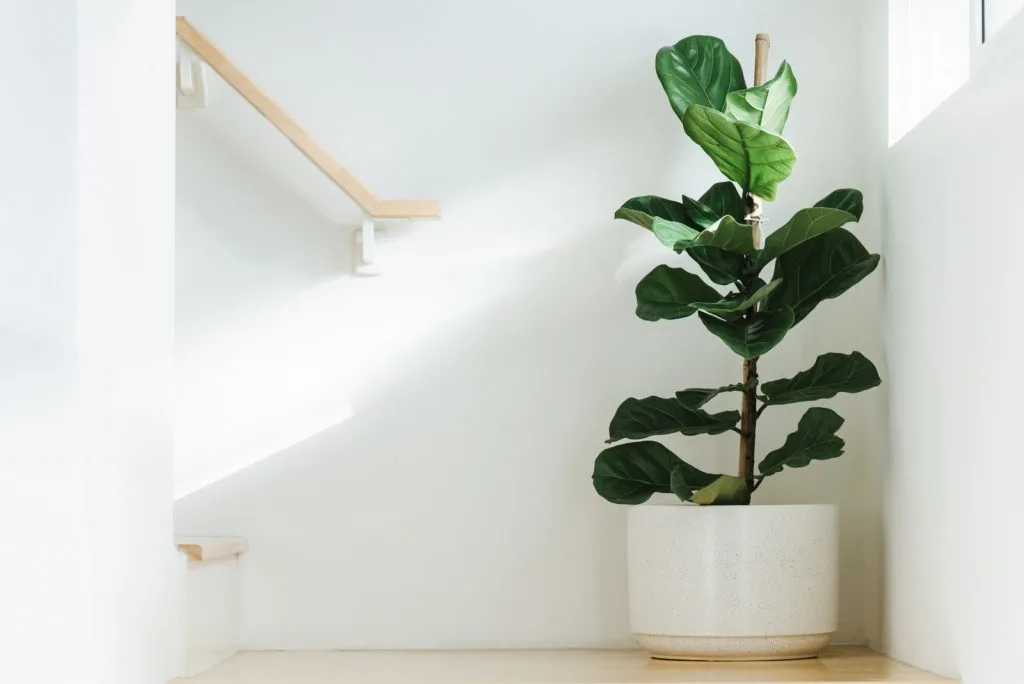
Common problems with this plant include: dropping leaves, yellowing leaves, bacterial infections, and pests. Most of these problems can be eliminated with regular care and monitoring of the plant.
The Contented plant
This is not a plant you want to leave in the corner and forget about.
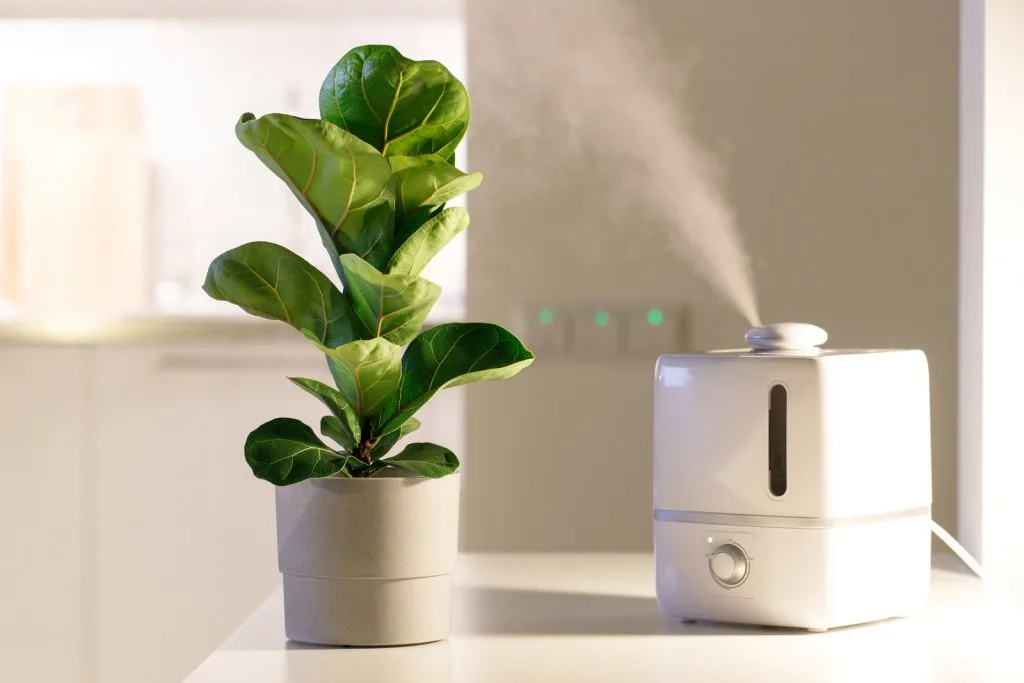
The watering schedule is important. This plant likes to have moist soil, but too moist and you can run into problems with root rot, fungus growth, and bacteria problems.
Keeping a regular watering schedule and performing a soil test (place your finger in the soil and check for moisture 1-2 inches down) is vital to the survival of this plant.
Purchase Fiddle Leaf Fig plants on Etsy
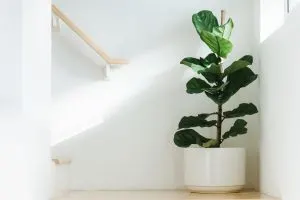
Other Popular Houseplants:
Check out our collection of Best Low Light Houseplants. And Read our Calathea Care Guide for more stunningly beautiful plants you must consider for your home. The plants pictured below are some favorite easy care plants.
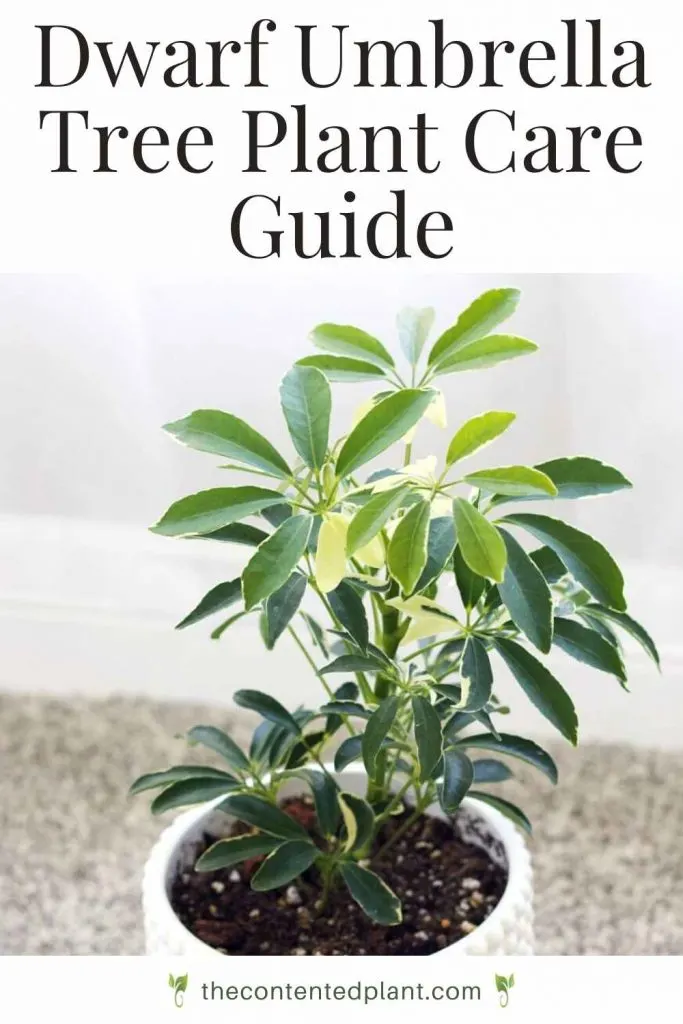
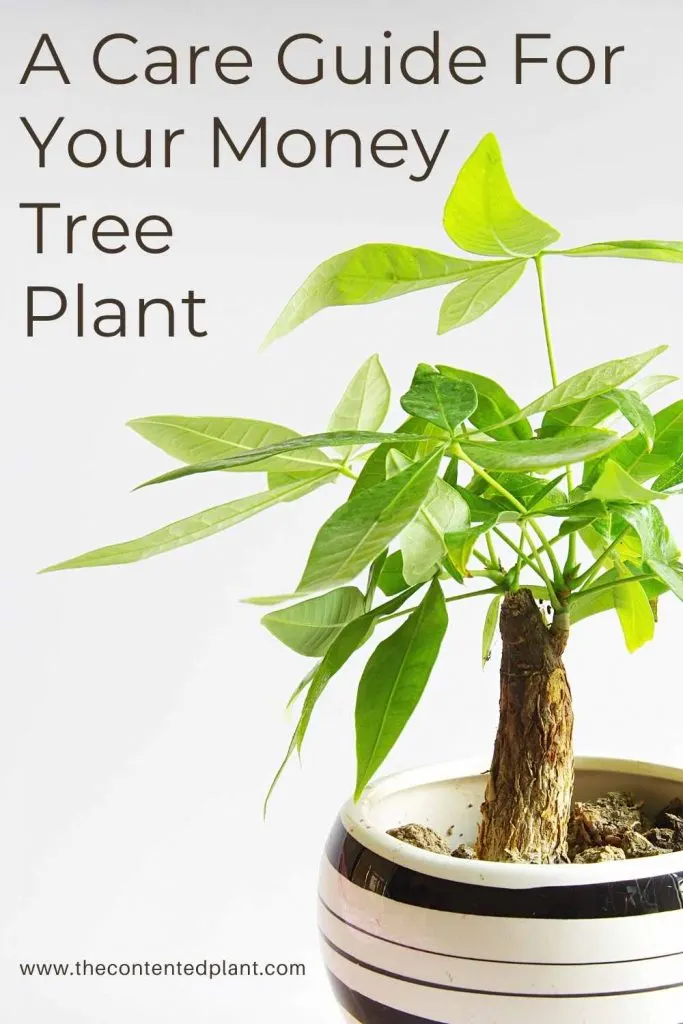
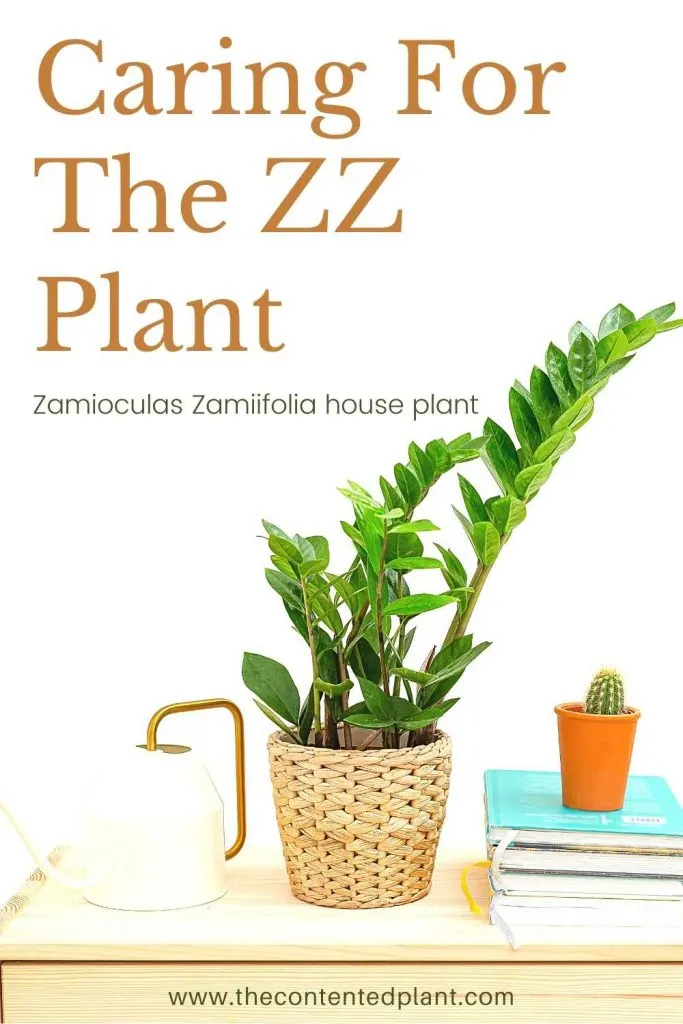
This plant enjoys humidity but not wet feet. If the soil is saturated to long
Fiddle leaf fig brown spots can occur when the plant has root rot due to overwatering. The brown spots can also occur as a result of too much sun (sunburned leaves) or under watering resulting in brown crispy edges.
Care Guide for Ficus Lyrata:
Fiddle Leaf Fig
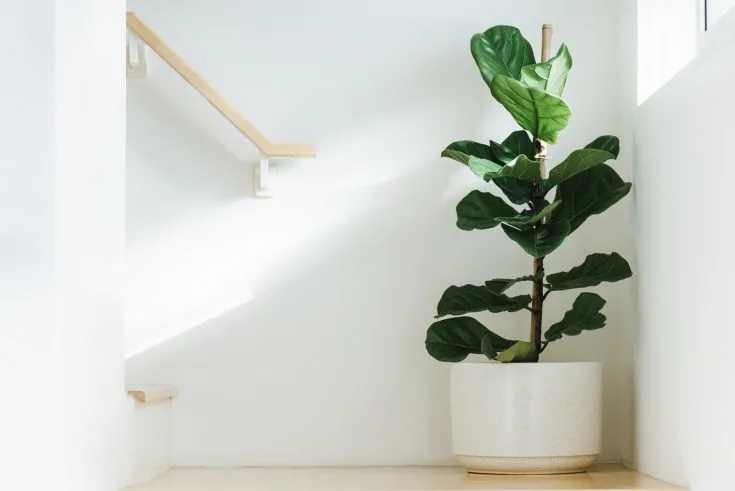
Ficus Lyrata Is a popular houseplant that grows in a tree structure. This plant has beautiful large green leaves that are shaped liked a fiddle.
Materials
Tools
Instructions
Soil Preference:
- Fiddle Leaf figs require a light well draining soil.
- A mix of potting soil and perlite will keep the roots happiest.
- Our mix for this plant is 40 % potting mix to 60% perlite.
- A heavy soil potting mix is not recommended for Fiddle Leaf plants.
Pot Size and repotting:
- Fiddle leafs need to be planted in pots at least 12 inches in diameter
- Any well draining pot can be used. It MUST have drainage.
- Repot every second year or when roots come out the drainage holes on the pot bottom To the next pot size up.
- When repotting always choose a pot that is 2-3 inches larger in diameter than the previous pot.
Lighting:
- Fiddle leaf fig plants require 6-8 hours of bright indirect sunlight everyday for optimal growth.
- Turn the plant every few weeks to maintain even leaf growth
- East facing sunny windows are best for this plant. A north or south window can burn the leaves.
- Fiddle leaf figs cannot stand strong hot direct light. The leaves will burn and the plant will suffer.
Watering:
- Use filtered water or let your tap water sit at least 24 hours to neutralize harmful chemicals before watering your plants.
- Water your Ficus Lyrata when the soil is dry down an inch or so. Fiddle leafs do not like to be overly wet.
- Watering is best done on a regular schedule (try weekly) so the plant is not over or under watered. Both can cause stress on the plant.
- This plant enjoys humidity. In dry climates fiddle leafs will thrive with a humidifier nearby. Or put it in your kitchen or bathroom if you have adequate light and floor space.
- In a dry climate frequent misting will help.
- In dormant winter months reduce watering as the plant will not need as much.
- Never let this plant get wet feet. If the soil is compacted the bottom of the soil can remain wet. This encourages root rot and fungus gnats.
- If you see yellow leaves on your Fiddle Leaf you are probably overwatering or the soil is too heavy.
- If the tips of the leaves turn brown suspect Underwatering. Or too dry air.
Humidity Tips:
This plant likes a very humid environment. Mimic the conditions that it came from. Keep it around 40 to 60% humidity. If you find your plant needs a bit more humidity than your home provides...
- Add a humidifier close by the plant.
- Pebble trays also work great to help increase humidity around your plant as evaporation occurs.
- Grouping plants close together also helps them pick up humidity from each other as they respire.
- Finally get a good mister and regularly mist your plant leaves
How to Fertilize:
- Apply a good quality fertilizer (linked in materials) once or twice a month during growing season. This plant requires fertilizer to maintain the large green leaves.
- Decrease feedings by late Fall and allow plant to rest through the winter months.
- Look for brown spots on the leaves of your plants. This may indicate an over concentration of salts in the roots from over feeding. It can burn the leaves.
Temperature:
- Keep Ficus Lyrata at a low of 65 Degrees F. to upward of 85 Degrees F. It enjoys warmth and humidity.
Pests:
- Fiddle leaf figs need to be checked periodically for pests.
- Stress by longterm overwatering, poor light, extreme temperatures and soil conditions are contributors to plant stress. And makes them more susceptible to pest damage.
- Spider mites, mealy bugs, scale, thrips and whitefly are the most common houseplant pests you will see.
- Read our post on How to get rid of aphids and other pests with our homemade pesticide soap recipe or neems oil.
- To minimize the possibility of pests be sure to check all nursery plants before bringing them home.
- Quarantine all new plants until you are sure no pests live in them.
Fiddle Leaf Propagation:
- Propagation is easily done stem cuttings.
- Take a cutting from a stem that is at least 18 inches long with 2-3 leaves, and 2 nodes.
- Place cutting in jar with water, cut side down.
- Roots will grow in 6-8 weeks.
- Plant when roots are at least 2-3 inches long.
Notes
Fiddle leaf figs are fairly straightforward to care for, however there are a few things to look out for with your plant.
Signs that your Fiddle Leaf is not happy:
Large brown spots on leaves, this can be caused by root rot. If the plant is dropping leaves and the leaves are looking sick, check the roots.
If your Fiddle leaf has yellowing leaves suspect over watering.
If a fiddle leaf has brown tips on its leaves the air is too dry. misting and a humidifier are needed.
Leaves burned and/or Fiddle leaf dropping leaves in a too hot direct light. Remove to moderate indirect light.
Follow Us:
Find us on YouTube, Instagram , Pinterest and TikTok! We love to Plant chat. We also comment, like and occasionally share your content to our daily stories. We’d love to see your plants. Share your joy in your houseplants. Happy Planting!
Recent Posts:
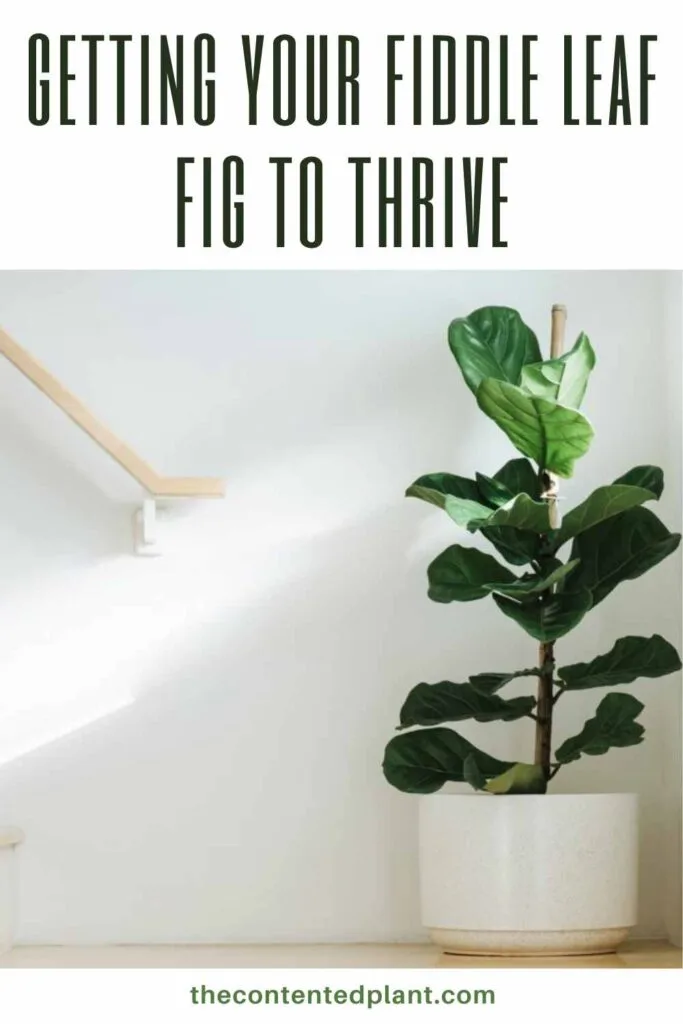
Read more about this plant
Read about the history of the Ficus Lyrata

7 Reasons Your Plant Has Yellowing leaves - The Contented Plant
Wednesday 29th of June 2022
[…] plants like these don’t like being moved about. If you have recently purchased one of these or a Fiddle Leaf Fig , or moved them to a new location in your home you may see some normal leaf […]
Elephant Ear Plant Care Guide - The Contented Plant
Wednesday 18th of May 2022
[…] The Fiddle Leaf Fig […]
Croton Plant Care Guide - The Contented Plant
Friday 13th of May 2022
[…] is similar to a Fiddle Leaf Fig and the Money Tree in that it does not like to be moved around […]
A Simple Guide to Houseplants for Beginners - The Contented Plant
Friday 7th of January 2022
[…] to first know how much water your plant likes (a succulent has very different watering needs than a fiddle leaf fig). Some plants like to dry out completely. A snake plant can go well over a month with no water. And […]
Ficus Benjamina (Weeping Fig) - The Contented Plant
Sunday 19th of December 2021
[…] Fiddle Leaf Fig Care Guide […]